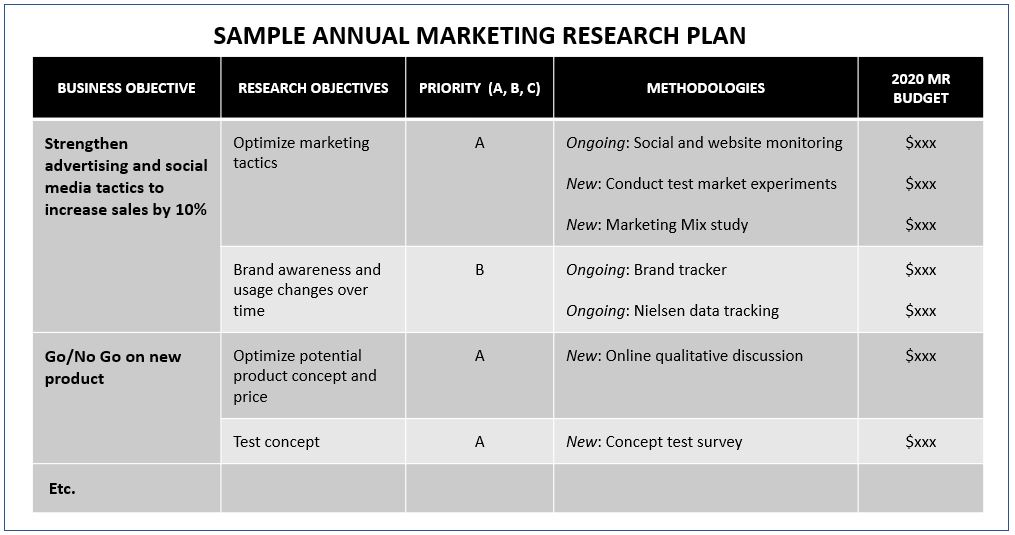How confident are you and your team in terms of allocating a percentage of your overall budget to market research?
Whether you belong to a start-up company or working on a multi-million-dollar project for a global market, you must all go through the process of budget allocation. This will help you determine if your budget and resources are going going where it's supposed to and is maximized. There are tips that can help you and your team set an appropriate budget that will meet your market research needs without the risk of over-spending.
5 Tips to Help You Allocate the Best Percentage of Your Budget for your Market Research Efforts:
-
Consider your overall budget
Before you even start planning your market research budget, it’s crucial that you nail down a firm overall budget first. Once this is taken care of, it would be easier for you to allocate an appropriate percentage of that budget to market research. Make sure you assign a reasonable portion of the overall budget to market research because it will only be more costly later on if you come across any issues just because you were trying to save money. At the same time, you don’t need to fork out almost half of your budget for market research alone.
-
Evaluate the past year’s budget
Evaluate how your team fared with your allocated budget the past year and check how and where it contributed to making better decisions. Did a new marketing strategy help improve sales? Did that new product launch during the second quarter lead to a new revenue stream? Were you able to avoid making costly errors? What new qualitative tools should you look into? Research and make a thorough analysis of what happened to the budget you and your team allocated for market research the past year so you can effectively look into the highs and lows of that year.
If you think the past year’s budget was insufficient, you need to identify why and what the ramifications are of this shortage. Apart from that, you need to identify new possible tools, strategies, and suppliers or third-party vendors where you can save more resources so you can include them in your upcoming plans.
-
Align with business objectives
Meet up with key business leaders in your company and identify the business objectives they’re targeting to address next year, either by brand or by division. It can be anywhere from optimizing online presence, increasing product trials, approving or disapproving new products, etcetera.
When you come up with research topics after meeting up and probing business leaders, you have to make sure that your topics:
- - Align with key business objectives
- - Can yield actionable results
- - Avoid “nice to knows”
Now, as you work with your team, classify these objectives into categories depending on priority. Given that you can’t implement all at the same time, you just have to figure out which divisions and objectives are more important and demand more resources than others. However, that doesn’t mean that you should ignore opportunities for lower priority divisions. You can look for other lower-cost research options to cater to their brands and products.
-
Create a budgeting plan
After gathering all the important information, this is part is where you sit down and create the actual budget. Come up with as many ‘what-if’ scenarios in your head and list down possible remedies for each. Carefully weigh the risk and rewards of each and every research endeavor you’re planning to implement. Re-evaluate existing activities and consider dropping it if it no longer serves the company’s goals to conserve resources. While doing so, understand that you can’t always follow through exactly how you planned things out so you also need to be prepared to adjust your budget and your timeline accordingly.
Here’s a sample partial annual marketing research plan that demonstrates how research objectives and methodologies align to business objectives:
 Source: olivetreeinsights.com
Source: olivetreeinsights.com
-
Monitor the progress
Prevention is still better than cure. Hence, make it a habit to always set up periodic checkpoints of your annual research plan to make sure that your strategic priorities have not changed. This is to ensure that you are still on the right track – goals are being met and the allocated budget are being maximized.
Remember that there are circumstances that will force you to take a different route so just keep adding alternate scenarios as situations arise so that you can come up with available options and be prepared to make adjustments well before it becomes difficult to take action.
Image source: snowing



